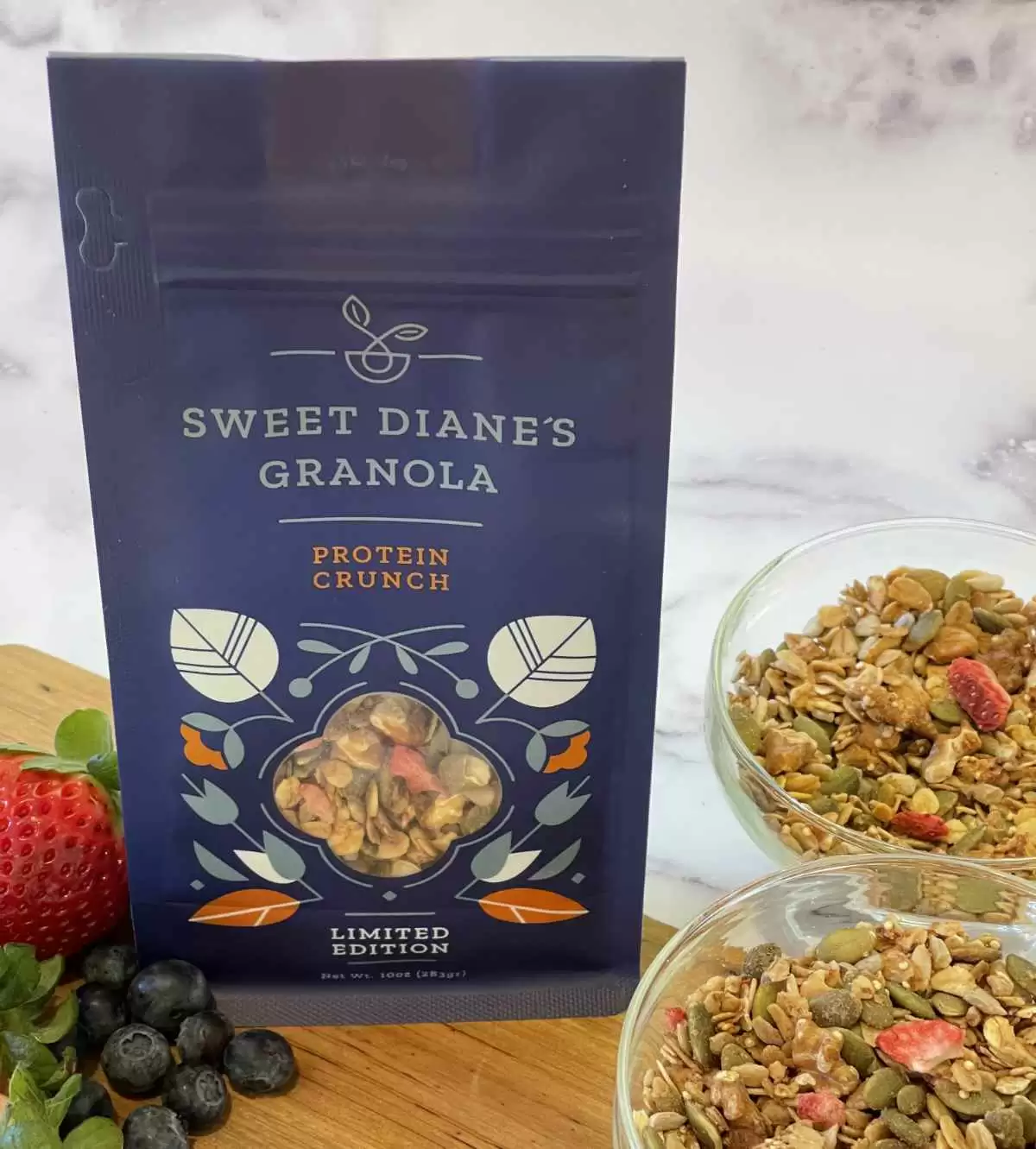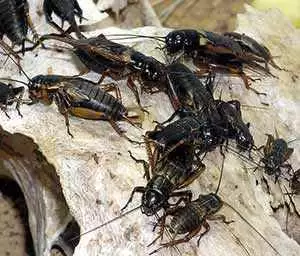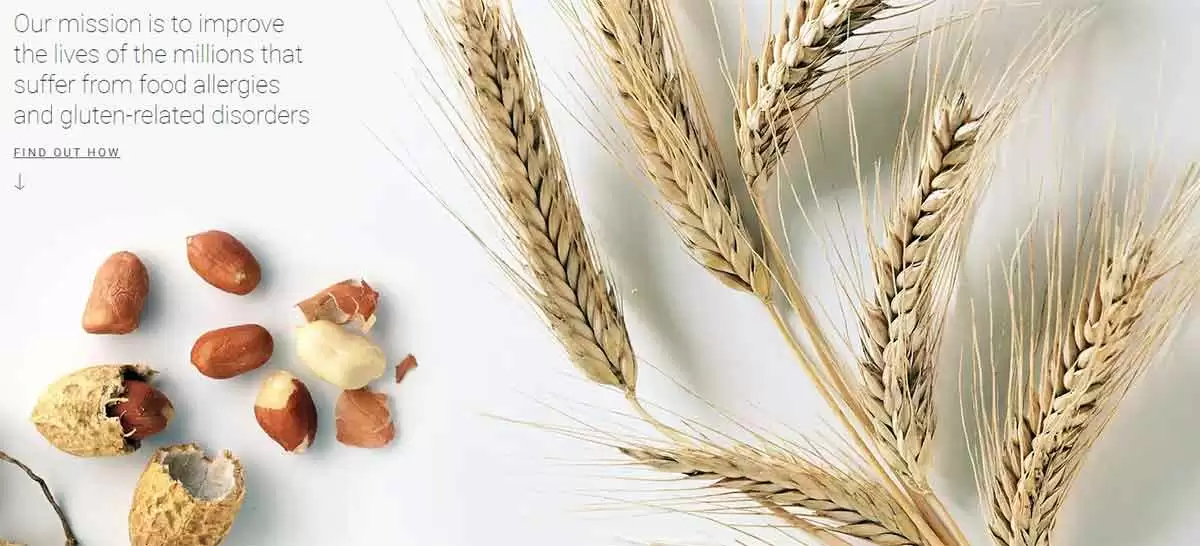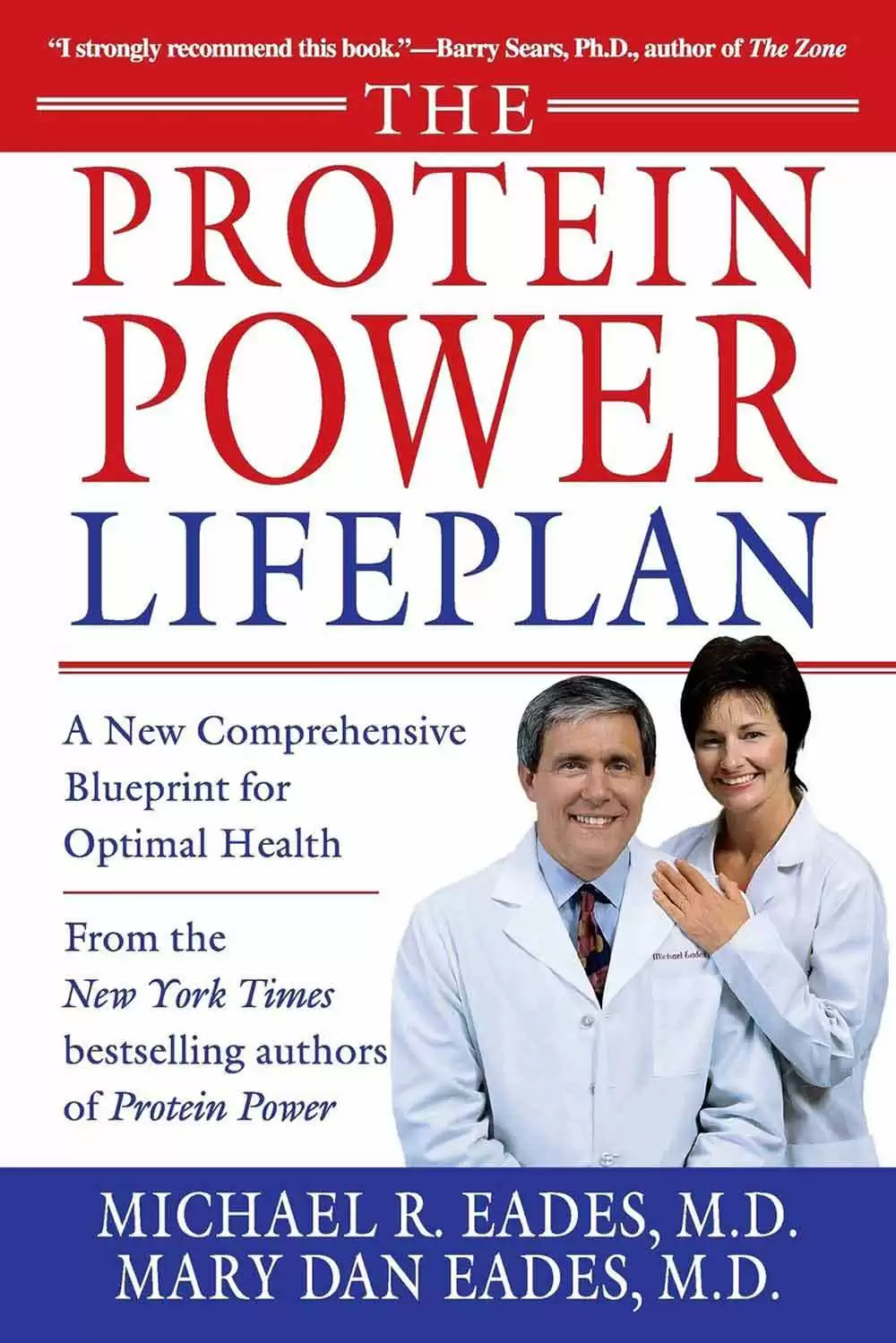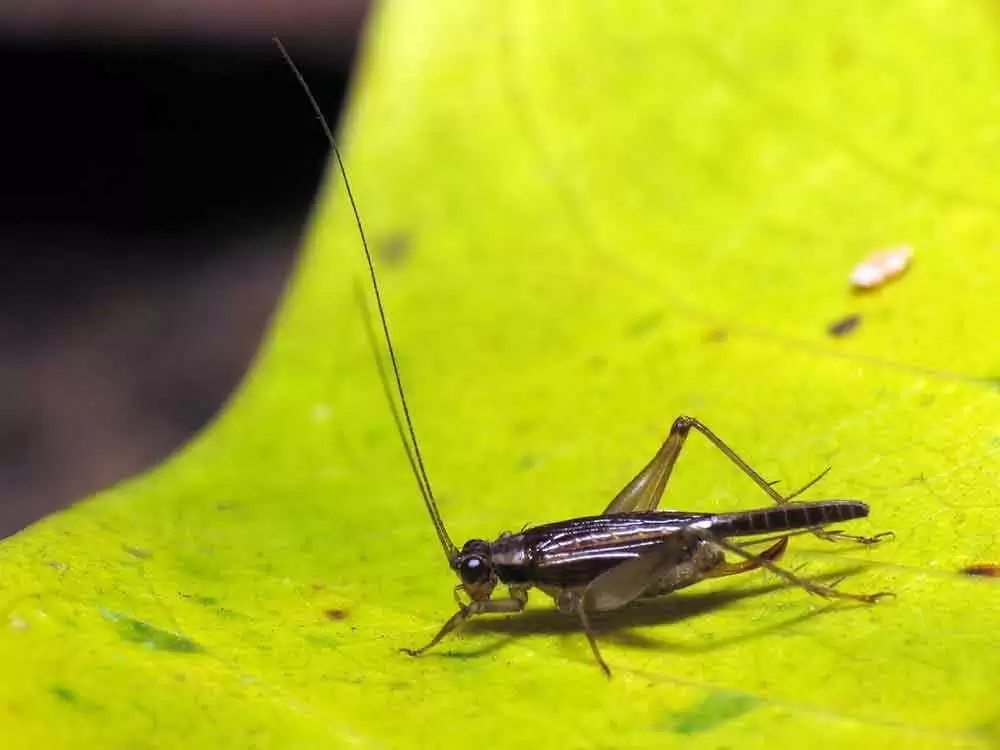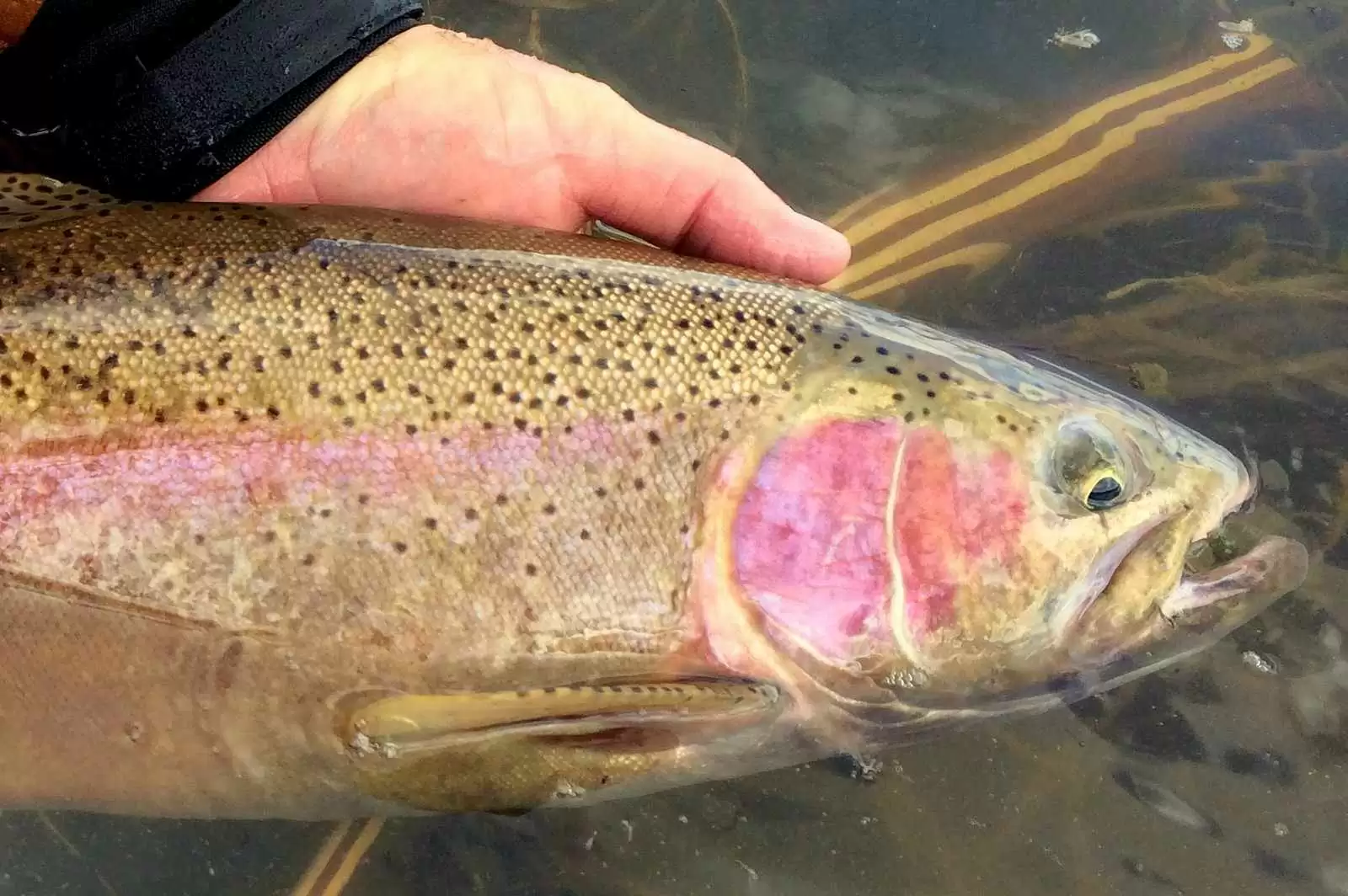-
Welcome to Celiac.com!
You have found your celiac tribe! Join us and ask questions in our forum, share your story, and connect with others.
-
Celiac.com Sponsor (A1):
Celiac.com Sponsor (A1-M):
-
Get Celiac.com Updates:Support Celiac.com!
Search the Community
Showing results for tags 'protein'.
-

Sweet Diane's Gluten-Free Protein Crunch Granola
Celiac.com Sponsor: Review posted an article in Product Reviews
Celiac.com 02/03/2023 - Sweet Diane's makes it's Protein Crunch Granola from the best possible ingredients available, including the finest gluten-free rolled oats, organic sunflower seeds, organic pumpkin seeds, walnuts, organic quinoa, almonds, organic flaxseed, and organic freeze dried strawberries. Besides being gluten-free, Sweet Diane's Protein Crunch is a perfect blend of sweet and savory, and this crunchy comfort food is also high in protein, 100% vegan, and contains only healthy fats like coconut oil. Gluten-Free Protein Crunch goes perfectly with your favorite yogurt, smoothie, or ice cream, or you can just eat it as a snack straight out of its resealable bag. It is a delicious, crunchy granola that lives up to its tagline: “Eat well and live deliciously.” Visit their site for more info. -
Celiac.com 06/23/2022 - Surprise! Fats are as important to your body as protein. Fats, in a balance between omega-3 and omega-6, control every motion, emotion, pain and heart beat. About half of your brain, your hormones, nerves and cell walls are various types of fats and cholesterol. Since your brain is basically a machine made of fats (directing other fats and proteins), it is, for its own protection, not primarily equipped to burn fats (like your heart) and it constantly needs glucose for energy. Adults only need about 5% fat in their diets. Children, however, need about 30% fat. One Harvard study shows that the total amount of fat in the diet, whether high or low, has no real link with disease. What really matters is the TYPE of fat in the diet. People and animals store the types of fat they eat. For example, if you feed chickens flaxseed or fish, their eggs have a huge percentage of omega-3. Eat solid, partially hydrogenated or heat-damaged fats and one may speed up premature aging. Flax oil helps the skin stay smooth, while lecithin and fish oil keep things “fluid”. It’s not about being plump or thin, it’s about health! Without fat in the diet, we would not be able to absorb vitamins A, D, E, and K. The usual commercial refining process for vegetable oils begins with seeds that may contain high levels of pesticides and herbicides. The seeds are crushed and subjected to a series of chemical treatments at temperatures up to 520°F. These treatments include the use of toxic solvents, caustic soda, preservatives and de-foamers, and they result in the destruction of essential fatty acids, loss of vitamins and minerals, and the formation of trans-fatty acids and free radicals. This is all done in the name of longer shelf-life and consumer acceptance (what’s left looks clean and pretty!). The “cold-pressed” or “expeller-pressed” oils available at health food stores are no guarantee of quality. Expeller-pressing still generates temperatures up to 200°F (93.3°C), and most of these oils are then refined and deodorized using basically the same nutrient-destroying process used in commercial ‘grocery store’ oils. Saturated Fats Saturated fat in the diet, which raises both LDL and HDL, should be severely restricted. There is evidence that diets high in animal fat and saturated fat increase endometrial, prostate and colon cancer risk. This fat is usually solid at room temperature. The liver uses saturated fats to manufacture cholesterol—the more saturated fat in the diet, the more cholesterol your liver will produce. Natural sources are whole milk, butter, cheese, ice cream, red meat, poultry skin, seafood, milk chocolate, coconuts, coconut milk, and coconut and palm oils. Polyunsaturated Fats Polyunsaturated fats are liquid at room temperature and come from vegetables, nuts or seeds such as corn, soybeans and sunflower seeds. They may lower total blood cholesterol however, in doing so, they may also reduce HDLs. Polyunsaturated fats contain omega-6 oil; an insufficiency of omega-6 can result in autoimmune problems, breast pain and lumpiness, eczema, hyperactivity in children, hypertension, inflammation and PMS. Limit your intake of polyunsaturated oil, but don’t totally eliminate them from your diet. The body does not make this oil; it needs a small amount of it to prevent essential fatty acid deficiency and to help regulate blood pressure. Do not fry or sauté with “polyunsaturated” light oils such as safflower, sunflower or corn oils. They oxidize readily into damaging free radicals at high temperatures. Free radicals are highly reactive molecules that can tear into your cells and start nasty chain reactions that can leave behind extensive damage, including alteration of your genetic code (DNA) and formation of cancer cells. Monounsaturated Fats Monounsaturated fats are liquid oils that help regulate hormones (clotting, pain, cramping, inflammation, etc.) and help prevent irregular heart beat (arrhythmia), lower LDL (bad cholesterol) and raise HDL (good cholesterol). Natural sources are olives, olive oil, canola oil, peanut oil, cashews, almonds, peanuts and most other nuts, and avocados. Harvard researchers found that replacing 80 calories of carbohydrates with 80 calories of either polyunsaturated or monounsaturated fats lowered the risk for heart disease by about 30 to 40 percent. Hydrogenated Fats ‘Trans-fats’, are solid fats produced artificially by heating liquid vegetable oils with metal catalysts and hydrogen. This process is called ‘hydrogenation’ and it enables certain foods to remain in a solid form at room temperature and prevents them from becoming rancid. Spreadable tub margarine is less hydrogenated and has fewer trans fats than stick margarine. The oils used to cook French fries and other fast foods are usually this kind of partially hydrogenated oil. Commercial baked goods, snack foods, and processed foods frequently include trans fats to protect against spoilage. Trans fats increase LDL (bad cholesterol), decrease HDL (good cholesterol), nullify the positive effects of omega-3, and increase the risk for non-Hodgkin’s lymphoma. Based on the latest epidemiologic studies, it is estimated that 100,000 premature deaths annually are attributed to consumption of trans-fatty acids. A report from the Institute of Medicine concluded that there is no safe level of trans fats in the diet. This has finally prompted the Food and Drug Administration to require that trans fats be listed as part of the Nutrition Facts food label. Until labels listing trans-fats appear, which will probably take a year or more, check the ingredient list for “hydrogenated oils.” The higher up these are listed, the more trans-fats the food contains. In 1912, Procter & Gamble introduced trans-fats in their new product, Crisco. The Crisco ad writers, with incredible foresight, wrote: “Trans-fats will affect every family in America!” According to Russell Jaffe, M.D., a noted medical researcher, hog farmers will not feed trans-fats to their animals because the pigs will die if they eat them. When Dr Jaffe contacted the U.S. Department of Agriculture, he found that it knew all about this but was not interested in the possible human effects since this area was not under its jurisdiction. The food industry funds a great deal of research. People in the research community know that you can often predict the outcome of a study if you know who is funding it. In that light, it’s unwise to accept blindly the press releases on ‘the latest research’ without considering who paid for it. Omega-3 Oil Just a few grams of omega-3 per day help prevent irregular heart beat (arrhythmia), decrease inflammation, promote blood flow, slash triglycerides, keep skin and other tissues youthful and supple through lubrication, and it increases our ability to think clearly. It also helps our bone density grow, helping to avoid osteoporosis, may prevent coronary heart disease and stroke, may prevent autoimmune disorders (lupus, Crohn’s disease, rheumatoid arthritis and nephropathy) and certain cancers. Flax (linseed oil) is a unique seed because it is 55% omega-3. Flaxseed oil is great to use in salad dressing or anytime the oil is not heated. If you purchase ground flax seed, keep it refrigerated or frozen to keep it from turning rancid. Other sources of omega-3 oil are canola oil, raw nuts, seeds, beans, and fish oil. While companies fortify many foods with vitamins, they are challenged to fortify our food with omega-3 because this oil is a liquid and quick to spoil. Evidence indicates that a deficiency of omega-3 fatty acids is associated with arthritis and joint stiffness, irritable bowel syndrome, PMS, prostate problems, various skin disorders as well as depression, phobias and schizophrenia. Fats in the Food Pyramid Harvard studies call for a change in the traditional food pyramid guidelines. They suggest promoting whole and unprocessed foods. Anything you do to foods (freeze, can, boil, age) lowers the vitamins, folic acid and B6 found naturally in that food). The current base of rapidly absorbed, refined carbohydrates (now the base of the pyramid) would move up near the top, to be consumed sparingly. The new base will consist of fruits and vegetables and will share this base with omega-3 oil. Recommendations Limit the bad fats and replace them with good fats. Significantly reduce both the trans and saturated fats in your diet and replace them with polyunsaturated and monounsaturated fats. As awareness about trans-fats increases, more “trans-fat” free products are becoming available. Use butter instead of margarine or shortening in cooking. Butter has some problems, too, such as residual hormones and pesticides, but it is a whole food. Whole foods have fat-mobilizing nutrients to take care of their own fats if eaten in moderation. If you still choose to avoid butter, use liquid vegetable oils or a soft tub margarine that contains little or no trans-fats. If you choose a soft margarine, be sure that it’s also low in saturated fat. For years, margarine was pushed as a heart healthy alternative to butter. Butter was known to be filled with cholesterol and saturated fat that were bad for blood cholesterol and increased the risk of heart disease. Because margarine was made from unsaturated vegetable oils, it was assumed it would be better for the heart. Unfortunately, research found that some forms of margarine— specifically the hard stick margarine—are actually worse for the heart than butter because they contain large amounts of trans fats. You can leave a cube of margarine sitting out for a very long time and insects or rodents will not touch it. Some margarines are not food! Reduce intake of commercially prepared baked goods, snack foods, and processed foods, including fast foods. Eat cold-water fish (such as mackerel, sardines, tuna, trout and salmon). These particular marine fish are high in omega3 fatty acids. There is some concern about eating fish frequently, due to the chemical and heavy metal pollution in the oceans. Freshwater fish near agricultural, industrial or mining areas are best avoided due to their high-level intake of toxic chemicals. Farm-raised fish are fed something akin to pet food and should be avoided; they are not as healthy and have insignificant levels of omega-3 fatty acids. Have some freshly ground flaxseeds every day. Pulverize three tablespoons of seeds in a blender or coffee grinder to yield about one tablespoon of oil (mixed in with the powder). This will approximate the suggested daily amount of omega-3 oil for an average person. It can be mixed with cereal, blended in a smoothie, added to yogurt, mixed into stuffed peppers, meatloaf, and stuffed cabbage rolls—your family won’t even realize they are eating healthier! Broiled Vegetable Dinner Recipe This recipe is from the “Wheat-free Gluten-free Reduced Calorie Cookbook” by Connie Sarros. Ingredients: 2 1⁄2 cups gluten-free chicken broth 1⁄4 cup water 1 cup brown rice 2 Tablespoons chopped fresh parsley 2 medium zucchini, julienned 1 medium yellow squash, julienned 2 Portobello mushrooms, sliced thin 1⁄2 green pepper, julienned 1⁄2 red bell pepper, julienned 1 large tomato, cut into 12 wedges 1 onion, sliced thin 3 Tablespoons extra virgin olive oil 2 Tablespoons balsamic vinegar 1 Tablespoons gluten-free soy sauce 1⁄4 teaspoon salt 1⁄4 teaspoon pepper 1⁄4 teaspoon garlic powder 1⁄2 teaspoon dill weed Directions: Bring the broth and water to a boil in a 1-qt. saucepan. Stir in the rice and parsley; lower heat, cover, and cook 25 minutes or until moisture is absorbed. Preheat broiler. Spread out vegetables on a greased baking sheet. In a small bowl, whisk together remaining ingredients; drizzle sauce over vegetables. Broil the vegetables 3 inches from the heat for 4 minutes. Turn vegetables and continue to broil till browned but still slightly crisp. To serve, spoon vegetables over hot rice. Makes 6 servings. Calories: 243; Total fat: 8.4g; Saturated fat: 1.2g; Cholesterol: 1mg; Sodium: 910mg; Carbohydrates: 33.4g; Fiber: 2.6g; Sugar: 0.3g; Protein: 8.3g
-
- fats
- hydrogenated
-
(and 6 more)
Tagged with:
-
Celiac.com 05/20/2013 - A team of researchers recently looked at the influence of various proteins on the quality of gluten-free bread formulas. Specifically, the team looked at the influence of different concentrates or isolates of protein on the structure, properties and aging of gluten-free bread. The research team included Rafał Ziobroa, Teresa Witczakb, Lesław Juszczakc, and Jarosław Korusa. They are affiliated with the Department of Carbohydrates Technology, the Department of Engineering and Machinery for Food Industry, and the Department of Analysis and Evaluation of Food Quality, at the University of Agriculture, in Krakow, Poland. For their study they made gluten-free breads from dough that included albumin, collagen, pea, lupine or soy protein. They then analyzed the rheological properties of the dough, and found that bread made with added test proteins showed major differences in its visco-elastic properties. Different flours had different effects on specific volume of the loaves. Soy protein and collagen reduced bread volume, while lupine and albumin significantly increased bread volume. In each case, the added proteins had a noticeable impact on the color and textural properties of bread crumbs. Most of the protein preparations significantly decreased hardness and chewiness of the crumb compared to the control sample. Overall, the dough that contained pea protein yielded bread with the most acceptable qualities. The study demonstrated that pea protein created the most acceptable flavor, color, smell and bread crumb in the final product. Soy protein proved to be the least acceptable of those tested, as it produced loaves with smaller volume and a compact structure. The results of this study show that adding pea protein can improve bread quality, and help to slow staling of starch based bread. Source: Science Direct
-
Celiac.com 10/25/2021 - Celiac disease is an autoimmune disorder marked by a strong immune response to dietary gluten proteins, which causes gastrointestinal symptoms, and damages the small intestine. Despite being fairly common, the only current treatment for celiac disease is a strict gluten-free diet. A number of clinical trials have looked to impede or reduce the immune response, many by targeting gluten proteins via immunosuppression, enhanced protein degradation or protein sequestration. Some data indicates that polyphenols may provide protection from celiac disease damage by disrupting the enzymatic hydrolysis of gluten proteins, sequestering gluten proteins from recognition by critical receptors in pathogenesis, and driving a reduction in inflammation. Researchers Charlene B. Van Buiten, and Ryan J. Elias recently set out to review mechanisms by which polyphenols can protect against celiac disease, critically assess recent works, and sketch out future applications for using polyphenols to protect against celiac disease. Van Buiten and Elias are affiliated with the Department of Food Science and Human Nutrition, College of Health and Human Sciences, Colorado State University, Fort Collins, Colorado, and the Department of Food Science, College of Agricultural Sciences, Pennsylvania State University, University Park, Pennsylvania. Their review highlights ways in which polyphenols can protect against celiac disease, offers a critical assessment of recent studies, and sketches potential applications for treating celiac disease in this manner. Their review appears in the International Journal of Molecular Science. Read more in Int. J. Mol. Sci. 2021, 22(2), 595
- 9 comments
-
- celiac disease
- gliadin
-
(and 4 more)
Tagged with:
-
Celiac.com 09/30/2021 - Anemia is common in children with celiac disease, but the details of how the disease develops in the gut remain obscure. One possible explanation could be an abnormal expression of duodenal iron transport proteins. However, the results have so far been unclear. To get a better understanding of the issue, a team of researchers recently set out to compare immunohistochemical stainings of duodenal cytochrome B (DCYTB), divalent metal transporter 1 (DMT1), ferroportin, hephaestin and transferrin receptor 1 (TfR1) in duodenal biopsies between 27 children with celiac disease and duodenal atrophy, 10 celiac autoantibody-positive children with potential celiac disease and six autoantibody-negative control children. The team looked at data for forty-three subjects, twenty-three with anemia, and twenty without. For both groups, the team evaluated expressions of iron proteins with respect to saturation and amount of stained area or stained membrane length of the enterocytes. The team's results showed an increase in the stained area of ferroportin, and a decrease in the saturation of hephaestin, in celiac patients versus control subjects. Meanwhile, the team found no differences in the expression of transporter protein between anemic and non-anemic patients. The present results indicate a change in ferroportin and hephaestin proteins in children with histologically confirmed celiac disease that is independent of iron status. Being able to spot celiac disease in children using simple stain reactions could be helpful to improving early diagnosis of celiac disease. Read more at mdpi.com. The research team included Marleena Repo, Markus Hannula, Juha Taavela, Jari Hyttinen, Jorma Isola, Pauliina Hiltunen, Alina Popp, Katri Kaukinen, Kalle Kurppa, and Katri Lindfors, and Isabel Comino. They are variously affiliated with the Tampere Centre for Child Health Research, Tampere University and Tampere University Hospital in Tampere, Finland; the Celiac Disease Research Center, Faculty of Medicine and Health Technology, Tampere University, Tampere, Finland; the Faculty of Medicine and Health Technology and BioMediTech Institute, Tampere University in Tampere, Finland; the Central Finland Central Hospital in Jyväskylä, Finland; the Laboratory of Cancer Biology, Faculty of Medicine and Health Technology, Tampere University in Tampere, Finland; Jilab Inc., in Tampere, Finland; the National Institute for Mother and Child Health, Carol Davila University of Medicine and Pharmacy, Bucharest, Romania; the Department of Internal Medicine, Tampere University Hospital, Tampere, Finland; and the Department of Pediatrics, Seinäjoki Central Hospital and University Consortium in Seinäjoki, Finland
- 1 comment
-
- anemia
- celiac disease
-
(and 3 more)
Tagged with:
-

High Protein Gluten-free Flour from Crickets?
Jefferson Adams posted an article in Gluten-Free Grains and Flours
Celiac.com 10/21/2014 - Insects offer one of the most concentrated and efficient forms of protein on the planet, and they are a common food in many parts of the world. So, could high-protein flour made out of crickets change the future of gluten-free foods? A San Francisco Bay Area company is looking to make that possibility a reality. The company, Bitty Foods, is making flour from slow-roasted crickets that are then milled and combined with tapioca and cassava to make a high-protein flour that is gluten-free. According to the Bitty Foods website, a single cup of cricket flour contains a whopping 28 grams of protein. So can Bitty Foods persuade gluten-free consumers to try their high protein gluten-free flour? Only time will tell. In the mean time, stay tuned for more cricket flour developments. What do you think? Would you give it a try? If it worked well for baking, would you use it? -
Celiac.com 07/29/2021 - Ukko, a company focused on developing artificial-intelligence designed products and solutions to food allergies, just announced a successful $40 million funding round. Their first effort will be to develop non-allergenic gluten protein and gluten-neutralized ingredients that can be used to in baked goods for celiacs and people with gluten sensitivity. At the same time, they are also working on a safe peanut allergy treatment that focuses on creating a safer therapeutic approach for allergic people undergoing desensitization treatment. Ukko plans to develop a safer peanut allergy treatment by using their non-allergenic version of peanut protein. For gluten allergies, Ukko is working on a safe gluten protein that can be used for numerous products in both commercial and manufacturing markets. Interestingly, Ukko also plans to use its flour products to produce their own line of gluten-free bread that will be available commercially. Current investors in Ukko include lead investor Leaps by Bayer, the venture arm of the pharmaceutical giant, Continental Grain Company, PeakBridge Ventures, SkyViews Life Science and Fall Line Capital, Khosla Ventures, Innovation Endeavors, and TIME Ventures. Read more in Food Dive.
- 2 comments
-
- artificial intelligence
- celiac disease
- (and 8 more)
-
Celiac.com 07/25/2020 - Drs. Michael and Mary Dan Eades are physicians and health researchers from Boulder, Colorado who co-wrote the best selling Protein Power in the late 1990s. The book sets forth, in the words of the authors, “not a high protein diet” but “an adequate protein diet.” For this reason that I am not a big fan of the “Protein Power” phrase, though I suppose that the alternate titles Adequate Protein or Fat Power would not have helped with book sales. The subject of this review is the sequel The Protein Power Lifeplan (Grand Central Publishing, 2001) in which the Eades take “the opportunity to answer readers’ queries, to include information on the many far-ranging benefits of the regimen, and to offer, at last, a comprehensive plan for living what we think of as a Protein Powered life.” This is not just your run of the mill diet book. It is a comprehensive plan for health. One that is well worth reading - not just for celiacs and the gluten intolerant, although they do address us directly, but for all those who wish to lead a healthier and fuller life. The Protein Power Lifeplan is composed of fifteen chapters, the cornerstone chapter being a section called “Man the Hunter,” in which the Eades lay out the evolutionary foundation for their lifestyle recommendations. The chapters that follow address varied topics such as insulin, dietary fats, cholesterol, antioxidants, sweets, as well as iron, magnesium, sunshine, along with mental and physical exercise. The book ends with practical advice on how to implement their nutritional plan. Man the Hunter This chapter sets the foundation for the rest of the book. It lays out the historical basis for, not just what our ancestors ate, but how they exercised, what types of minerals they obtained in their diets, and how much sunshine they got (no, they didn’t have sunscreen). The gist of the message – a point I’ve made in my other articles for this newsletter – is that while we’ve only been consuming the fruits of agriculture and ranching for at most 10,000 years, we were hunter gatherers for at least two and a half million years before that. What did we eat? Well, certainly not grains in any form (inedible grass seeds), no beans, no dairy, no refined sugars. Only a diet of “nutrient-dense foods – meat, fish, and poultry, rich in protein and good-quality essential fats; fruits, berries, and vegetables, rich in antioxidants and cancer fighting substances….” Brief Summaries of Some Non-gluten Chapters Before we get to the subject that’s probably of most interest to the readers of this newsletter – the impact of gluten on the human gut -- let’s briefly touch on a few of the other interesting topics in this book: Insulin – this key hormone “lies at the root of heart disease, diabetes, hypertension, cholesterol, and triglyceride elevations….” This is an important subject for the gluten intolerant as we tend to replace foods that contain gluten and are high in carbohydrate with non gluten foods that are also high in carbohydrate. In doing so we’ve solved the primary problem of autoimmune reactions to foreign proteins but we continue to set ourselves up for what is variously called Syndrome X, Metabolic Syndrome, or Hyperinsulinemia/Insulin-Resistance Syndrome. Fats – the low fat dietary recommendations made by the health establishment in the past few decades have been an abject failure. Healthy, unadulterated fats were a staple of our ancestors’ diets. While there is a shifting perspective with a newfound emphasis on Omega 3 and monounsaturated fats like olive oil, it is a shame of the highest order to have demonized what was to our ancestors a primary macronutrient. Cholesterol – another unnecessary demonization has been directed at this “naturally occurring and necessary substance.” Yes, there is such a thing as “bad” cholesterol, the subfraction of LDL called “small, dense.” But taking drugs to reduce it is akin to demanding that bandages be removed from the scene of an auto accident. High bad cholesterol is a symptom of a dietary issue rather than a problem in and of itself. And, gasp, no correlation has ever been established between the consumption of cholesterol and high blood cholesterol. Sunshine – “We recommend regular sunbathing as a necessary step back to the natural lifestyle we were meant to live.” Huh? Haven’t we been told to avoid the sun at all costs, to slather on layer after layer of sunscreen to avoid the deadly rays from above? Like us, our ancestors would certainly have avoided sunburn when possible. But sunlight is a natural source for vitamin D and will “protect us from weak bones, sad moods, a slow metabolism, and cancers….” It is not to be avoided but enjoyed. The Leaky Gut Perhaps of most interest to celiacs and the gluten intolerant, The Protein Power Lifeplan contains a tour de force of a chapter entitled “The Leaky Gut: Diet and the Autoimmune Response.” If you were to read nothing else in the book, you have to read this one chapter. The substance of the Eades’ argument in this chapter is this: We only began to consume grains as an important food source after the change from a hunter gatherer to farmer. This occurred about 10,000 years ago at the most. (Some groups made this shift much more recently!) The purpose of the human intestinal tract is to “break down the foods we eat and absorb nutrients from them.” Eating grains causes not just direct damage to the digestive system, in the case of celiac disease, but also results in cellular inflammation of the gut lining. This inflammation then leads to intracellular gaps that allow incompletely digested plant proteins access to the bloodstream. Once in the bloodstream, “these plant proteins… cause trouble because their structure is so similar to the structure of body proteins; some of them are like the proteins in joint surface tissues, others like the filtering apparatus of the kidneys, and still others like the covering of nerves.” It’s not just grains that cause this problem. Lectins from beans can also cause intracellular gaps in the gut and the autoimmune issues above. Conclusion By taking us back to our ancestral diet and habits that formed over millions of years, The Protein Power Lifeplan is an excellent resource for discovering why it is that we have issues with gluten-containing grains. But, as you can see, this book is more than just a warning against wheat, rye, and barley. It’s a refreshing, common-sense antidote to much of our recent dietary wisdom. Highly recommended reading.
-
Celiac.com 03/03/2020 - If NASA scientists have their way, humans might just eat their way out of the climate crisis. How? A new protein powder, Solein, made out of nothing more than CO₂, water and electricity. The result is a high-protein, flour-like product that contains 50 percent protein, 5–10 percent fat, and 20–25 percent carbohydrates. Based on a concept developed by NASA, the product has wide potential as a carbon-neutral source of protein. Best of all, it looks and tastes like regular flour, but is completely gluten-free. Making Gluten-Free Food from Air How, you might ask, is it possible to spin food out of thin air. A Finnish company called Solar Foods, is planning to bring to market a new protein powder, Solein, made out of CO₂, water and electricity. The company's protein powder, called "Solein," supposedly looks and tastes like wheat flour, but is completely gluten-free and safe for people with celiac disease. Solar Foods makes Solein by extracting CO₂ from air using carbon-capture technology, and then combines it with water, nutrients and vitamins, using 100 percent renewable solar energy from partner Fortum to drive a natural fermentation process similar to the one used to produce yeast and lactic acid bacteria. The company claims its single-celled protein is "free from agricultural limitations." Solein's manufacturing process is carbon neutral and highly scalable. The company is set to make the ingredient available for a wide variety of food products following its launch in 2021. Solein will likely first appear on grocery shelves in protein shakes and yogurt. According to Anna Häkämies, Senior Specialist, Product Development, "Based on our current understanding, Solein is gluten-free. There is no reason to believe that any gluten protein exist in Solein." Will this new highly green, highly sustainable, carbon-neutral superfood help to save the planet? Join the protein powder discussions in our forum. Stay tuned for more on this and related stories. Read more about Solein at Bigthink.com
- 1 comment
-
- food
- gluten-free
- (and 4 more)
-
Has anyone had high blood protein at or before diagnosis? Specifically, "polyclonal hypergammaglobulinemia" or "polyclonal gammopathy," caused by inflammation. My gamma globulin is high, putting total protein at 9. I've had every test short of a scope & dr's can't find an obvious source. For 3 yrs I've had difficultly maintaining weight & lost 15 lbs, only recently gaining it back on a very unhealthy high-fat diet. The symptom pointing to celiac is occasional shredded/mushy stools, with stringy mucus-like stuff in it, sometimes white fuzzy stuff. Honestly it looks like candida from googling. If tTG IgA & IgA celiac panels are normal, can it still be celiac? *POOP PICS* (for those willing) ?: Shredded poop: https://imgur.com/a/qoLH8a4 Stringy mucus: https://imgur.com/a/kvLLFGi Soft w/ stringy mucous: https://imgur.com/a/5XwQBr9
- 4 replies
-
- blood
- gammopathy
-
(and 5 more)
Tagged with:
-
Celiac.com 03/20/2019 - Sensitivities to gluten are becoming more common. Patients with celiac disease have wheat-specific immune responses, but researchers have remained uncertain about the potential role of non-wheat proteins in triggering symptoms in celiac or gluten-sensitive patients. A team of researchers recently set out to assess the role of non-gluten proteins that may trigger symptoms in celiac or gluten-sensitive patients. Specifically, the team wanted to determine if lactobacillus degrades and/or reduces the inflammatory effects of amylase trypsin inhibitors (ATI). The research team included Alberto Caminero, Justin L. McCarville, Victor F. Zevallos, Marc Pigrau, Xuechen B. Yu, Jennifer Jury, Heather J. Galipeau, Alexandra V. Clarizio, Javier Casqueiro, Joseph A. Murray, Stephen M. Collins, Armin Alaedini, Premysl Bercik, Detlef Schuppan, and Elena F. Verdu. The researchers put mice on a gluten-free diet, with or without wheat amylase trypsin inhibitors (ATI), for one week. Mice included a control group of C57BL/6 mice, and groups of Myd88–/–, Ticam1–/–, and Il15–/– mice. The team then collected small intestine tissues and measured intestinal intraepithelial lymphocytes (IELs). They also looked at gut permeability and intestinal transit times. Control mice fed ATI for one week were fed daily with Lactobacillus strains with either high or low ATI-degrading capacity. The team sensitized NOD/DQ8 mice to gluten, and then fed them an ATI diet, a gluten-containing diet or a diet with ATI and gluten for two weeks. Mice were also treated with Lactobacillus strains that had high or low ATI-degrading capacity. The team took samples of intestinal tissues, and measured IELs, gene expression, gut permeability and intestinal microbiota profiles. Intestinal tissues from control mice show that ATI triggered an innate immune response by activating TLR4 signaling to MD2 and CD14, and impaired barrier function even in the absence of mucosal damage. Gluten-sensitized mice carrying HLA-DQ8 showed increased intestinal inflammation in response to dietary gluten. The team found that lactobacillus degraded and reduced the inflammatory effects of ATI. In conclusion, amylase trypsin inhibitors influence gluten-induced intestinal symptoms in wild-type mice and increase inflammation to gluten in genetically susceptible mice. Lactobacillus degrades and reduces the inflammatory effects of ATI. Strategies to alter the gut microbiome, such as the ingestion of bacteria that can degrade and reduce ATI, may be helpful for people with various wheat-sensitivities, including celiac disease. Read more at Gastroenterology The researchers are variously affiliated with the Farncombe Family Digestive Health Research Institute, McMaster University, Hamilton, Ontario, Canada; the Research Center for Immunotherapy, University Medical Center, Johannes Gutenberg University, Mainz, Germany; Institute of Translational Immunology, University Medical Center, Johannes Gutenberg University Mainz, Mainz, Germany; the Department of Medicine, Columbia University, New York, NY, USA; the Institute of Human Nutrition, Columbia University, New York, NY, USA; the Department of Microbiology. Universidad de Leon, Leon, Spain Division of Gastroenterology and Hepatology, Department of Immunology, Mayo Clinic College of Medicine, Rochester, Minnesota; the Research Center for Immunotherapy, University Medical Center, Johannes Gutenberg University, Mainz, Germany; Institute of Translational Immunology, University Medical Center, Johannes Gutenberg University Mainz, Mainz, Germany; and the Division of Gastroenterology, Beth Israel Deaconess Medical Center, Harvard Medical School, Boston, MA, USA.
- 1 comment
-
- celiac disease
- food allergy
-
(and 5 more)
Tagged with:
-

Can Plant Proteins Make Better Gluten-Free Bread?
Jefferson Adams posted an article in Additional Concerns
Celiac.com 04/02/2019 - Anyone familiar with gluten-free bread knows the downsides. Dry structure, questionable texture, and sometimes inferior taste. Can plant proteins help to change that? Two groups in the UK, Innovate UK and Coeliac UK, are joining forces to develop gluten replacements from UK-grown crops. The Nandi Proteins-led consortium includes Genius Foods, ingredients business AB Mauri, agronomy firm Agrii, Heriot-Watt University in Edinburgh. The project will focus on three ingredients currently underused by the food industry: fava beans, rapeseed by-products, and naked oats. As part of that goal, Nandi Proteins will use its proprietary technology to create protein concentrates from the raw materials. Nandi holds patents based on the fact that proteins change when they unfold, or denature, Nandi explained in a statement. Properly controlled, the denaturation process can be used to alter and control protein functionality as an ingredient. The project is looking to turn lower cost by-products into high value ingredients that can improve the qualities of gluten-free bread. In addition to utilizing natural ingredients that are currently discarded or scarcely used, the project may help gluten-free bread manufacturers to reduce the number of additives in gluten-free breads. Once Nandi creates functional proteins, Genius Foods and AB Mauri will begin testing ingredients, and looking to produce better, more commercially viable bread formulas. The goal is better gluten-free bread, and, ideally a better foothold in the gluten-free market for the manufacturers. Success could be a win for consumers looking for better gluten-free breads. Efforts Nandi and its partners will help the UK lead the way in industrial production of innovative gluten-free ingredients, Coeliac UK chief executive Sarah Sleet told reporters. Read more at FoodNavigator.com-
- baked goods
- bread
-
(and 8 more)
Tagged with:
-
Celiac.com 01/02/2019 - Way back in 2011, a team genetic engineering researchers at the University of Washington began to develop a new treatment for celiac disease. The team’s early research suggested that an oral enzyme that could break down the gluten proteins would be an ideal therapy for celiac disease. Taken before meals by a person with celiac disease, such an enzyme would ideally neutralize all trace of gluten before they could trigger an immune response. Their search to develop such a treatment would take them nearly a decade of effort. To fuel their goals, the team made use of pioneering computer software, called the Rosetta Molecular Modeling Suite, that helps design new proteins, including enzymes. They began by selecting a protein-digesting enzyme that was already known to work well in acidic conditions. However, the selected enzyme lacked the gluten-killing ability the team sought. Using a video game-like interface to Rosetta called Fold-it, the team created versions of the enzyme that would target gluten proteins. The team then chose about 100 of their most promising enzyme designs. They then physically created each of those designer enzymes in the lab and tested their ability to break down gluten. By combining the best performing enzymes, the team was able to create a prototype gluten-degrading enzyme, which they named KumaMax, as it is derived from the starter enzyme, kumamolisin. After years of additional tweaking of the prototype enzyme at the University of Washington’s Institute for Protein Design, the team was able to begin Phase I clinical trials on KumaMax. If clinical trials go well, the team is looking to follow with testing on human celiac patients. The results could give rise to a new commercially available enzymatic treatment for celiac disease. Read more at: ASCH.ORG
-
Greetings Everyone, I was diagnosed 3 months ago with Celiac disease and am in the process of trying to get adjusted, and I've been feeling a lot better since I went gluten-free. However, lost a lof weight since I stopped working out. I've been having some trouble keeping my protein intake up and I've been going to start taking my protein shakes again. The one I'm looking at is called "Pure Paleo" by Designs for health that the company names. Have anyone here heard of this company? and my second question is Ensure max Protein is gluten-free? The label says that it is Gluten Free but I'm not sure about the ingredients. Thanks in advance
-
Celiac.com 08/09/2018 - Whatever one might say about crawfish, shrimp and crustaceans in general, Americans don’t typically eat bugs. Can a former Ralph Lauren marketing executive turn the world on to flour made from crickets? Over the last few years, Americans have been presented with a buffet of alternative proteins and meals. Robyn Shapiro’s company, Seek, has created all-purpose, gluten-free, and Paleo blended flours, which can be used cup for cup in any recipe calling for flour. The company, which makes pure cricket powder for smoothies, ice creams, and other liquid-based foods, is now selling cinnamon-almond crunch cricket protein and snack bites. To get the public interested in its cricket protein and cricket flour products, Shapiro has collaborated with famous chefs to create recipes for The Cricket Cookbook. The book’s cast includes La Newyorkina chef Fany Gerson, a Mexico City native known for her cricket sundaes; noted Sioux chef and cookbook author Sean Sherman; and former Noma pastry chef Ghetto Gastro member, Malcolm Livingston, among others. Other companies have sought to promote the benefits of insect protein, including Chapul, which makes cricket protein bars and powders, and Exo, which makes dairy- and gluten-free cricket protein bars in flavors like cocoa nut and banana bread. These companies, along with others in the business tend to aim their products at Paleo dieters by promising more protein and no dairy. Seek’s chef-focused approach makes it unique. By pairing with noted chefs who already use bugs and bug protein in their cooking, Shapiro is looking to make the public more comfortable and confident in using bugs to cook and bake. So far, the response has been slow, but steady. Seek has already raised nearly $13,000 from 28 backers, well on its way toward its $25,000 goal. Seek’s cricket flours and other products will initially only be available via Kickstarter. If that goes well, the products will be sold on Seek’s website. Early backers will get a discount and a chance for a signed copy of the book. Seek hopes to debut their products nationwide starting in the fall. Could gluten-free cricket flour and the new cookbook be the next big gluten-free Christmas gift? Stay tuned for more on this and other gluten-free stories. Source: grubstreet.com
-

What Can Rainbow Trout Tell Us About Enteritis?
Jefferson Adams posted an article in Latest Research
Celiac.com 08/22/2017 - The main source of protein in aquaculture feeds is fishmeal, which is expensive and not conducive to the long-term growth of the industry. Plant protein is much cheaper. However, replacing fishmeal with a plant-based diet reduces salmonid growth, and soy and other legumes can cause severe enteritis in the fish. Most rainbow trout are carnivores. Trout do fine on fishmeal, but trout fed a soy-based diet will usually develop gastroenteritis and other problems. One particular strain of trout, however, seems to tolerate soy just fine. Why? Researchers recently set out to identify genes critical to the rainbow trout strain's tolerance of a soy-based diet. The research team included Jason Abernathy and Ken Overturf from USDA-ARS, USA, and colleagues. For their study, the research team compared non-selected and selected rainbow trout raised for 12 weeks on either a fishmeal-based feed or a high-soy, all plant-protein feed. They then conducted a functional genetic analyses that included differential gene expression, co-expression, and metabolic pathway mapping in muscle and liver tissue. The team found 63 candidate genes that enable trout to tolerate a high-soy diet. The genes may help researchers to uncover and promote plant-diet tolerance in fish. The researchers also identified risk loci, which are implicated in human inflammatory bowel diseases, suggesting that rainbow trout selected for plant-diet tolerance may provide a biomedical model for better understanding ulcerative colitis and celiac disease. Source: PLOS ONE-
- aquaculture
- enteritis
- (and 5 more)
-
Celiac.com 12/16/2015 - Just a month after General Mills recalled nearly two million boxes of gluten-free Cheerios from store shelves and warehouses due to "inadvertent" gluten contamination, the company and its flagship brand Cheerios are facing yet another public relations challenge. General Mills is being sued for false advertising by a major consumer watchdog over its Cheerios Protein cereal, introduced in March, 2014, as a "healthy alternative" to both classic Cheerios and other breakfast cereals. According to an official complaint filed with the Northern California District Court by the Center for Science in the Public Interest (CSPI), "General Mills falsely and misleadingly markets Cheerios Protein to children and adults as a high protein, healthful alternative to Cheerios." According to General Mills’ official marketing language, Cheerios Protein "offers the benefits that go along with starting the day with 11g of protein and the great taste of Cheerios that kids and parents already know and love." According to the CSPI, while Cheerios Protein does contain a tiny bit more protein than classic Cheerios, General Mills has nearly doubled the recommended serving size for Cheerios Protein, making its protein content seem much greater than it actually is. So, while the "recommended serving size" of original Cheerios is 28g, the recommended serving of Cheerios Protein is 55g. When you crunch the numbers, Cheerios Protein only has just 7/10 of a gram more protein than regular Cheerios, hardly a major source of protein, or a major improvement over regular Cheerios. In their complaint, CSPI is accusing General Mills of engaging in what amounts to marketing sleight-of-hand, to trick consumers into paying an average of 70 cents more per box than other brands of Cheerios, for a product that contains an insignificant amount of extra protein, but 17 times more sugar than classic Cheerios. Yes, even though they have about the same amount of protein by weight, a serving of original Cheerios contains just 1g of sugar, while a serving of Cheerios Protein will give you a whopping 17g of sugar; about the same as half a can of Coke. Basically, eating two bowls of original Cheerios will give you about the same amount of protein as Cheerios Protein, but with far less sugar, and at a lower cost. That's where the lawsuit comes in. Basically, CSPI is hoping to use the courts to pressure General Mills to remove or revise their marketing cliams, which CSPI says, are little more than smoke and mirrors. Stay tuned for the latest developments on this and related stories. Read more at Inquisitr.com
- 1 comment
-
- advertising
- cheerios
- (and 5 more)
-
Celiac.com 10/01/2015 - Nutrilac protein from Arla Food Ingredients (AFI) offers manufacturers a way to make gluten-free products that are indistinguishable from products made with conventional flour, says John Kjaer, global sales manager for bakery at AFI. Kjaer points out that the gluten-free trend is huge right now, will only be sustainable if "bakery companies…can make gluten-free bread and cakes that are virtually indistinguishable from their conventional equivalents." According to AFI, Nutrilac can be incorporated into standard gluten-free baked goods, and offers gluten-free bakers a similar baking quality to wheat flour, producing an elastic dough that can be handled like standard wheat flour dough. This eliminates the problem of dry, crumbly gluten-free baked goods. Nutrilac uses completely natural milk proteins, which have a neutral, well-rounded milky taste, with no impact on overall product flavor. Products made with Nutrilac do not require new machinery or a change in standard manufacturing procedures, making it easier for companies to enter the gluten-free market, AFI said. AFI will be showcasing Nutrilac at IBA in Munich from the 12-17 September 2015.
Celiac.com Sponsor (A8):
Celiac.com Sponsor (A8):
Celiac.com Sponsor (A8-M):
Celiac.com Sponsor (A8):
Celiac.com Sponsor (A8):
Celiac.com Sponsor (A8-M):

